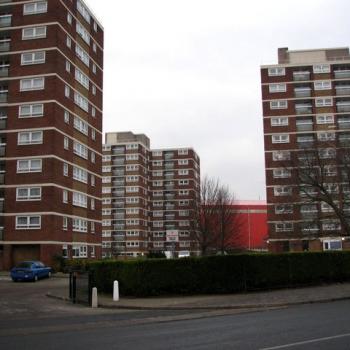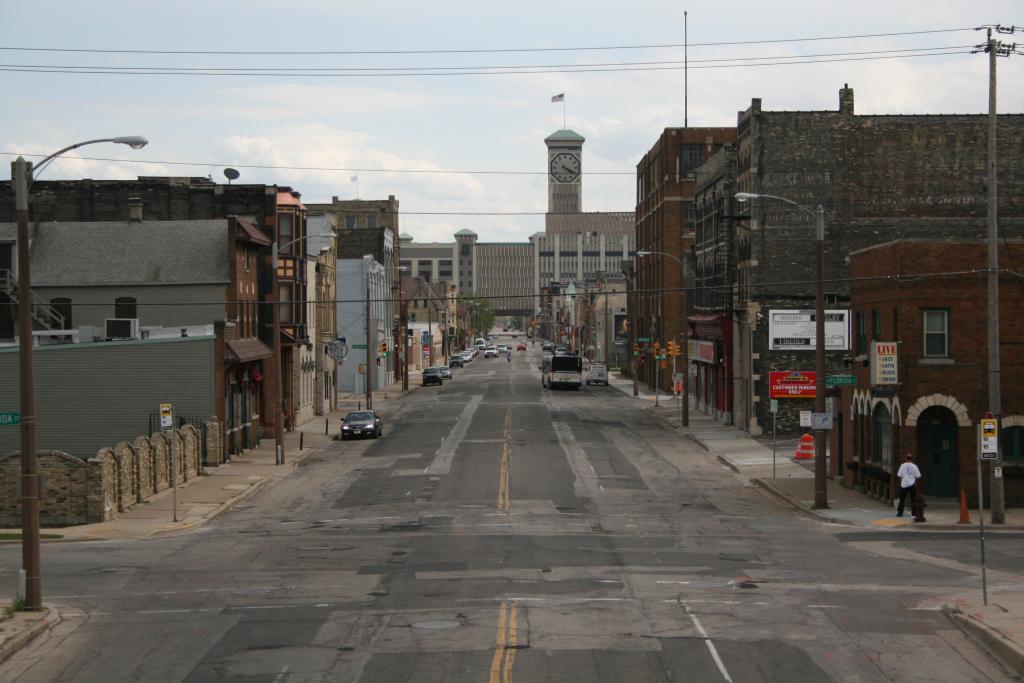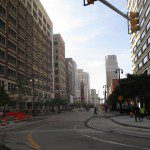![https://commons.wikimedia.org/wiki/File%3AAmbassador.jpg; By Mark Ellinger (Mark Ellinger) [CC BY-SA 3.0 (https://creativecommons.org/licenses/by-sa/3.0)], via Wikimedia Commons](https://wp-media.patheos.com/blogs/sites/533/2018/01/800px-Ambassador.jpg)
I’ll start by saying that I’ve always considered SROs, single-room occupancy hotels, that is, to be a key ingredient in the solution to the problem of affordable housing. It’s a subset to the general solution of density: if land is at a premium, fit more people on a given patch of land — most obviously by building multifamily, multistory buildings instead of single-family homes (yes, even for families — Europeans and some city-dwellers accept that it’s perfectly reasonable for a child to live in an apartment, however much the American suburban middle-class might find this intolerable), but also, within those multistory buildings, accepting reduced levels of space per person.
Now, granted, I have a certain idealized image of an SRO: a small room, to be sure, maybe the size of a college single dorm room, maybe smaller (since their inhabitants don’t need the desk/study space), with communal washrooms as well as a shared kitchen (with individual food-storage cabinets) and recreational space. In my mind’s eye, it’s like a European youth hostel, but with small private bedrooms rather than large open rooms with bunks. And I likewise picture it with spartan furnishings but kept appropriately clean and free of bugs.
It’s always seemed to me that ensuring that zoning permits such housing is an appropriate way of enabling working poor single people to independently manage to pay for their own housing, without needing to wait for a spot on a subsidized housing list to open up. It also seems to me that these sort of people are also likely to have difficulty managing roommates, so that the idea of sharing a larger apartment might not be realistic. And it’s my understanding that another feature of the SRO is that they are (or historically have been) available on a hotel-like basis, that is, without the need for the full month’s rent and a security deposit.
So that’s the context with which I read a recent story in the Tribune, “As Wilson Men’s Hotel prepares to close for renovations, a look at shrinking number of SROs in Chicago,” which reports on one such SRO, having changed ownership, being in the process of a remodel which will expand the size of, and double or triple the cost of, its units. At present, its units, 7 x 7 rooms, rent for $350 per month, after the remodel, the units will have their own kitchenette and bathroom, but the number of units will decrease from 250 to 80 or 90 and the rent will increase to $800 – $1300. Another SRO, the Carling, was gutted and, in the renovation, 155 units were reduced to 80, now with individual kitchenettes and bathrooms; because the going rate for the units is now above what the former occupants can afford, it has been turned into a city-subsidized affordable-housing building, with residents paying 30% of their income in rent and with an on-site social worker. Other SROs are being purchased by developers who are gutting them and then renting the buildings as, well, more ordinary apartments.
Now, these units are not particularly homey places. They’re called “cage hotels” because the individual rooms, lacking windows, are not fully enclosed, but have a “cage” on top, for ventilation. (See the picture at this link; though it describes a particularly squalid SRO, it seems to be what these places look like.) But they’re a vast improvement on the “cage apartments” of Hong Kong, the dormitories of a Chinese factory, or even the apartments one reads about periodically, in which newly-arrived Mexican workers, to economize and send as much money back home as possible, squeeze a dozen people into two-bedroom apartments.
And I admit that I don’t understand the economics of it: is it simply not possible to build or convert a building into an SRO format in today’s cities, at a market rent that would be affordable to the poor, because of the basics of building codes like properly-wired electrical service? Or do modern building codes specify a square-footage requirement per person, or require kitchenettes, prohibit communal bathrooms, and so on, that make it impossible to create new SROs at the low rents of buildings which are grandfathered into providing this far more economical way of providing housing?
Which gets back to the question posed in my title: is it fundamentally acceptable, or not acceptable at all, to expect the poor to live in this sort of housing, but supporting themselves, vs. being allocated spaces in nicer, more spacious, but subsidized buildings?
Image: the Ambassador Hotel, a historic SRO in San Francisco now managed as a nonprofit. https://commons.wikimedia.org/wiki/File%3AAmbassador.jpg; By Mark Ellinger (Mark Ellinger) [CC BY-SA 3.0 (https://creativecommons.org/licenses/by-sa/3.0)], via Wikimedia Commons













